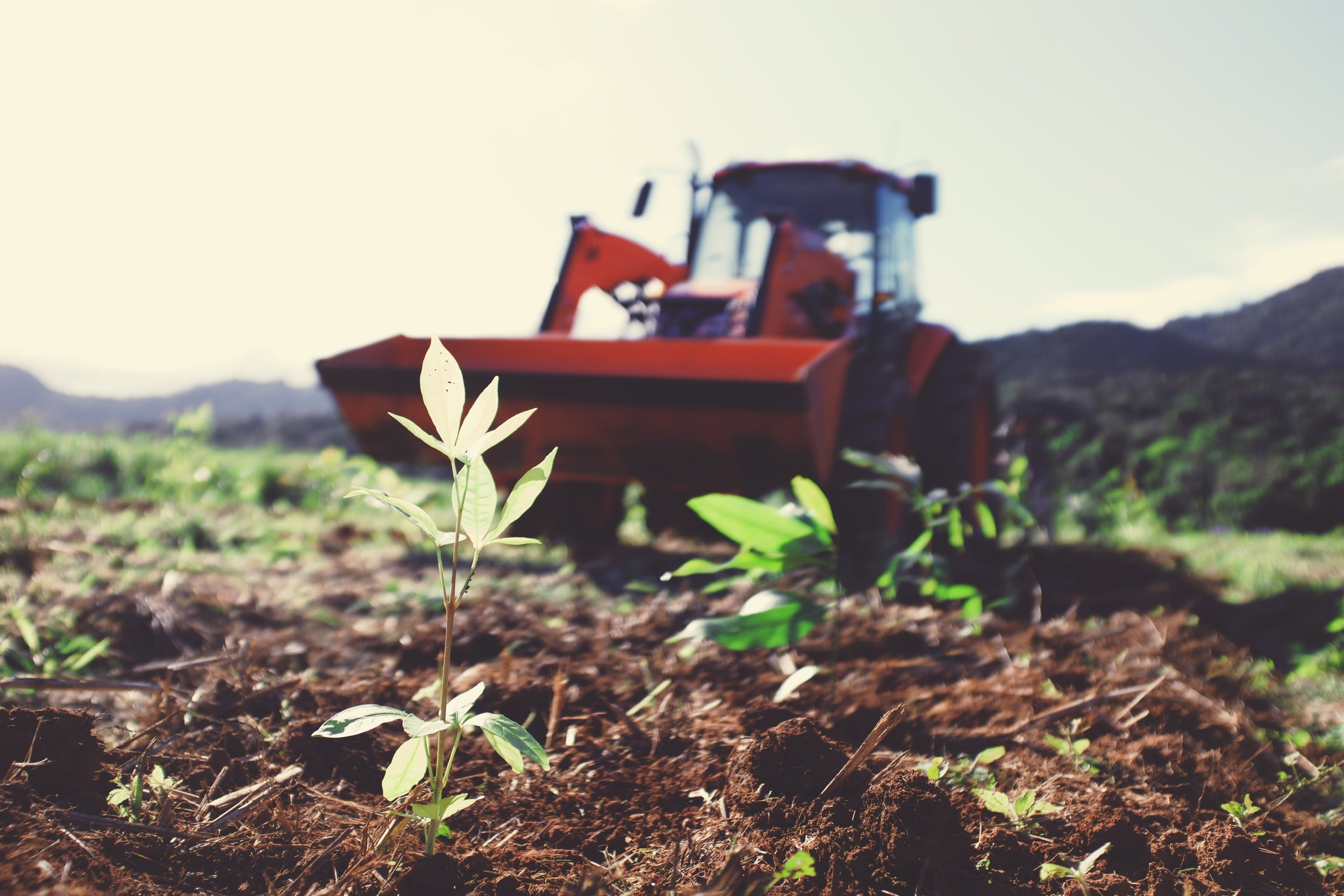Finding the Balance: What We’ve Learned About Organic Weed Management in Rainforest Restoration
At ClimateForce, our commitment to organic rainforest restoration doesn’t stop at planting trees. Equally important is creating the right conditions for those trees to survive and thrive—especially in the critical early years as we strive towards canopy cover. One of the biggest challenges? Managing the weeds and grasses that compete with young seedlings for light, water, and nutrients.
That’s why we’ve spent the past four years systematically testing a range of organic weed management and mulching strategies. The results are now beginning to offer valuable insights for landholders, researchers, and restoration practitioners alike.
Diverse Strategies for Complex Ecosystems
Our trials included everything from mechanical weed control (such as slashing and brush cutting) to more ecological approaches like selective weeding, groundcover integration, and the careful use of organic-certified herbicides. All work was conducted under strict Australian Certified Organic (ACO) standards.
We also tested four different mulch types:
Forestry mulch: Coarsely chipped woody biomass
Carabeen mulch: Locally sourced organic material
Guinea grass (GG) mulch: Chopped on-site biomass
No mulch: A control condition for comparison
Our dedicated field staff collected data as part of daily operations, using GPS tracking apps for tractor-based activities and digital survey forms for input logging. Monthly mortality checks provided an accurate picture of how each treatment influenced seedling survival.
Climate-Aware Restoration: The Key Takeaway
The overall results were clear: there is no single "best" mulch for all conditions. Each type has strengths and weaknesses depending on local weather patterns.
Carabeen mulch stood out as the most balanced performer, combining moderate climate sensitivity with strong cost-efficiency.
Forestry mulch worked well in moderately variable conditions but required monitoring in hotter areas.
GG mulch was the least consistent and least cost-effective, performing poorly under both heat and rain extremes.
No mulch offered cost savings but came with significant risks from climatic variability and environmental stress.
The research suggests that future restoration protocols must be climate-aware, considering seasonal forecasts of temperature and rainfall to guide mulch selection and application timing.
How Our Approach Evolved
In our earliest restoration trials, particularly during Plant Out 1, weed management relied heavily on mechanical interventions—primarily slashing and brush cutting. These methods were effective at suppressing above-ground weed growth, especially in dense tropical growth conditions. However, they were also extremely labour-intensive, requiring high effort per hectare and frequent return cycles to maintain clear zones around young seedlings. While this approach helped establish early growth, it quickly became apparent that it lacked long-term sustainability—both economically and ecologically. Repeated mechanical disturbance also posed risks to soil structure and seedling root systems when not carefully managed.
By the time we reached Plant Out 2, our team recognised the need to diversify and innovate. This phase became a critical experimental testbed, where we trialled a broader suite of management treatments to evaluate their impact on both weed control and ecological performance. Notably, we introduced organic herbicide applications—using ACO-approved inputs—as a complementary tool to reduce labour and suppress regrowth in targeted areas. Additionally, we refined our mechanical approach by implementing grid-based slashing patterns, which improved efficiency and reduced redundant cutting.
Importantly, Plant Out 2 marked the beginning of a more ecologically integrated design philosophy. We began weighing weed suppression not only in terms of visibility and access but also in relation to microclimate regulation, soil cover retention, and non-target plant protection. The goal was to strike a balance: suppress dominant invasive species without unnecessarily disturbing beneficial understorey growth or creating erosion-prone bare soil patches. This adaptive experimentation laid the groundwork for a more holistic restoration strategy.
By the time we advanced to Plant Out 3, the evidence was mounting—and the benefits of integrated management were becoming clearer. After analysing field results, cost data, and ecological indicators, we transitioned to a more refined methodology that we formalised as Management Type 3. This approach combined several effective practices into a cohesive, replicable system. It included targeted mulching to suppress weeds and retain moisture, spot applications of organic herbicide to reduce manual labour in inaccessible or persistent weed zones, selective weeding to protect desired companion species, and a grid-oriented slashing technique to streamline operations.
Management Type 3 emerged as a standout candidate for future implementation—not just because of its weed control effectiveness, but also due to its cost-efficiency and ecological compatibility. It reduced overall labour requirements, helped maintain soil health, and allowed for more consistent scheduling of maintenance rounds. Most importantly, it supported young seedlings through their most vulnerable phases without over-clearing or over-intervening in the surrounding ecosystem.
This evolution—from fully mechanical methods to a multi-tool, ecologically sensitive strategy—represents a major step forward in designing scalable restoration systems that are both practical and regenerative. As we move into larger-scale operations, Management Type 3 offers a strong blueprint for weed management that balances performance with the long-term goals of soil resilience, biodiversity support, and restoration success.
Moving Forward: A Smarter Way to Restore Forests
Our work at ClimateForce shows that with good data and adaptive management, it’s possible to refine organic restoration strategies for both ecological outcomes and cost-efficiency.
We’ll continue to monitor these trial plots as they mature, testing and strengthening combinations and refining approaches as part of our mission to create a blueprint for scalable, regenerative land restoration.
Stay tuned as we share more results and explore how the lessons we’ve learned here can be applied across other tropical restoration projects.




